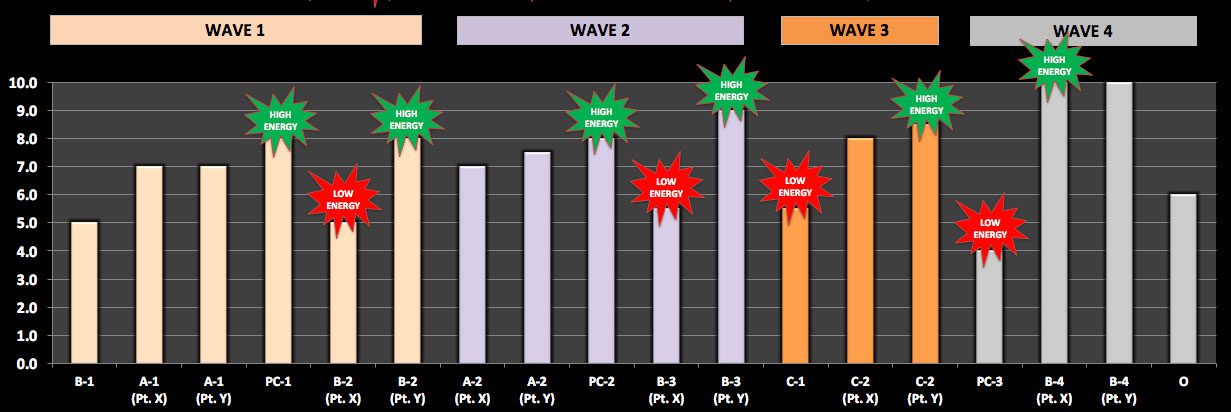Of all the sections in a hit song, it’s the chorus that is typically the most infectious, engaging and memorable. While the appearance of simplicity is key to ensure that it easily connects and resonates, the construction and implementation is anything but.
There are a host of factors that need to be taken into consideration in order to both maximize a chorus’ impact and how it influences the song as a whole. A few might be:
- Should the chorus kick off the song in place of an intro, and if so how?
- How can each iteration of the chorus remain memorable AND be fresh and engaging? (most Pop songs contain three or four chorus sections)
- How does the chorus relate to other sections in the song – does it blend in while still standing out?
- If the song features a strong vocalist, how can the artist’s vocal chops be showcased while adhering to the K.I.S.S. ME (Keep It Simple, Singable and Memorable) principal?
These are just a few of the many things that songwriters should be thinking about during the writing process.
A great example of how it all comes together is Ariana Grande’s Side To Side. Written by an all-star team of hitmakers including Max Martin, Savan Kotecha, Ilya, Alexander Kronlund and the song’s two artists – Ariana Grande and Nicki Minaj – Side To Side’s choruses are meticulously well crafted for maximum impact.
[Header2 header=”Chorus Kick Off “]
While an intro is by far the most popular way to start a song in Billboard Hot 100 Top 10 hits (86% of songs in 2016), kicking off with the chorus has its benefits as well. In Side To Side, the first chorus cleverly functions as both an intro AND a chorus.
Line 1 (Grande): I been there all night
Line 2 (Minaj): Ariana
Line 3 (Grande): I been there all day
Line 4 (Minaj): Nicki Minaj
Line 5 (Grande): And boy got me walkin’ side to side
Line 6 (Minaj): Let them hoes know
The listener is instantly hooked in by Grande’s chorus vocals and the grooving, traditional Reggae vibe. This, in conjunction with the enticing narrative summation, “and boy got me walkin’ side to side,” effectively wets the listener’s appetite for things to come.
However, it’s Minaj’s appearance that really sets this chorus apart from the others, as she’s not featured in any other chorus section. Her role is to set up the verse that follows with “let them hoes know,” and plug both herself and Ariana Grande. Artist plugs are a common characteristic found in intros in the Hip Hop/Rap genre (which is an influence in Side To Side), and is especially useful when artists are not announced in conjunction with a song in an airplay environment (i.e. it makes it easier for the listener to find the song).
[Header2 header=”Standing Out: Dynamic Contrast “]
One of the most effective ways to enable a chorus to stand out is through a pronounced dynamic/energy level shift. In Side To Side this is primarily put into effect through a changeup in the accompaniment relative to the sections directly preceding and following it.
Key
A=Verse, PC=Pre-Chorus, B=Chorus, C=Bridge, O=Outro
1-10: Energy level
Choruses 2 and 3: Following the energy level peak in the pre-chorus, the level drops off significantly in the first stanza due to its sparser arrangement. The level is thrust back up in the second stanza as other elements enter the mix, including the drums and bass.
Chorus 4: A clever twist occurs in the fourth (and last) chorus. Instead of starting in breakdown/sparse mode, as the others do, it immediately launches into the full accompaniment/high-energy instrumentation that defines the second stanza of choruses 2 and 3. In order to help enable this high-energy chorus to stand out, the pre-chorus that precedes it features a low-energy breakdown/sparse characteristic, which is unique in comparison to the other high-energy pre-choruses in the song. Without this energy level decrease, the impact of the last chorus would be diminished due to the lack of dynamic contrast. Additionally, Grande’s melisma in the third pre-chorus is two beats longer than in the other pre-choruses, which heightens the anticipation leading into the final chorus of the song. This unexpected sectional prolongment preceding the final chorus is an effective technique utilized in other Max Martin co-written hits such as Can’t Feel My Face, Love Me Like You Do, and Problem.
[Header2 header=”Standing Out: Influence & Vibe Shifts “]
One of the core strengths of Side To Side is that it meticulously blends traditional Reggae elements with contemporary production elements and techniques. This provides the song with an authentic Reggae vibe while coming across fresh and current in today’s mainstream music scene. In addition to bridge 1 and the outro, the first stanza in choruses 1, 2 and 3 features the most traditional Reggae accompaniment in the scope of the song, driven by wah-effected electric guitar and electric bass. This enables the chorus to further stand out against the purely contemporary pre-chorus that precedes it, which features Hip Hop, Trap, R&B/Soul and Electropop accompaniment elements, but no trace of Reggae.
Key
A=Verse, PC=Pre-Chorus, B=Chorus, C=Bridge, O=Outro
X: Accompaniment type is in effect
-: Accompaniment type is not in effect
/: Divides the first of the section from the second
[Header2 header=”Show Off & K.I.S.S. ME “]
If you’ve got it, flaunt it. Some artists are known for their stellar vocal chops, and this is certainly the case with Ariana Grande. However, engaging vocal acrobatics need to be balanced by what I like to call the K.I.S.S. ME principal (Keep It Simple, Singable and Memorable). If the listener can’t sing along to or remember the melody because it is too complex, it will make it harder for the song to connect and resonate. Side To Side is a great case-in-point of a song that provides a strong balance of both.
The first two lines/phrases (“I been there all night” / “I been there all day”) are simplistic and straightforward, and almost identical to each other. As a result, it’s easy to sing along to and the repetition reinforces both lines in the listener’s head. The “boy” melisma that follows, which is stretched across eight pitches, provides the section with an infectious WOW factor that highlights Grande’s vocal chops. The section then concludes with the K.I.S.S. ME principled “got me walkin’ side to side” payoff. As a whole, the section easily gets engrained in the listener’s head while the showcase in the middle provides with an infectious spin without compromising the memorability factor.
[Header2 header=”The Phone Number Method & Engaging Space Fillers “]
When you listen to the chorus, you’ll notice that each lead vocal line is segmented by a prolonged rest. These rests put what I call the “phone number” method of melodic construction into effect, which enables each line to sink in and resonate with the listener on a more pronounced level (i.e. it is easier to remember 212-555-1212 than 2125551212).
Additionally, the space left by these rests provides a great opportunity for other infectious elements to be added into the mix. In Side To Side, the “call and response” technique is utilized in choruses 2, 3 and 4, which heightens the impact of the section and reinforces key lyrical content. Examples:
Vocal Call & Response
- Chorus 2, 3, 4: “And boy got me walkin’ side to side (Side to side)”
- Chorus 3, 4: “I been there all night (Been there all night baby)”
- Chorus 3, 4: “I been there all day (Been there all day baby)”
Vocal/Instrumental Call & Response
Chorus 3, 4: The interaction between Grande’s vocals and the subtle woodwind-esque synth hook provide an infectious call and response characteristic:
I been there all night
(synth hook)
I been there all day
(synth hook)
And boy got me walkin’ side to side (side to side)
[Header2 header=”Keeping It Fresh & Memorable “]
It’s very important to provide a song with an effective balance of repetition and contrast. The repetition will get the song ingrained in the listener’s head, while the contrast will help to keep the song fresh and engaging as it progresses. This is especially important on a “like section” basis. Each of Side To Side’s four choruses possess both similar and contrasting characteristics, which ensures that the primary sectional payoff connects with the listener without wearing out its welcome.
Below is an overview of the similar and contrasting characteristics between Side To Side’s choruses.
- Chorus 1: One stanza, sparse arrangement. It essentially functions as a chorus-based intro as it both introduces the listener to the song’s primary sectional payoff and plugs both artists featured in the song (i.e. Grande and Minaj). This version of the chorus is unique in the scope of the song.
- Chorus 2: Two stanzas, sparse first stanza/part X and full arrangement second stanza/part Y, additional background vocals, core accompaniment and lead vocal melody are the same as chorus 1.
- Chorus 3: Two stanzas, sparse first stanza/part X and full arrangement second stanza/part Y, more background vocals than chorus 2, core accompaniment and lead vocal melody are the same as chorus 2.
- Chorus 4: Two stanzas, both stanzas feature the full arrangement, more background vocals than chorus 3, core accompaniment and lead vocal melody are the same as chorus 3.
This article features analysis culled from the Hit Songs Deconstructed Side To Side Deconstructed Report. The full report provides you with a deep dive into the what, how and why behind the songwriting and production techniques that helped make the song a global hit.
Hit Songs Deconstructed PRO subscribers can access the full Side To Side Deconstructed Report by clicking here. Not a subscriber? Click here for a free trial.





